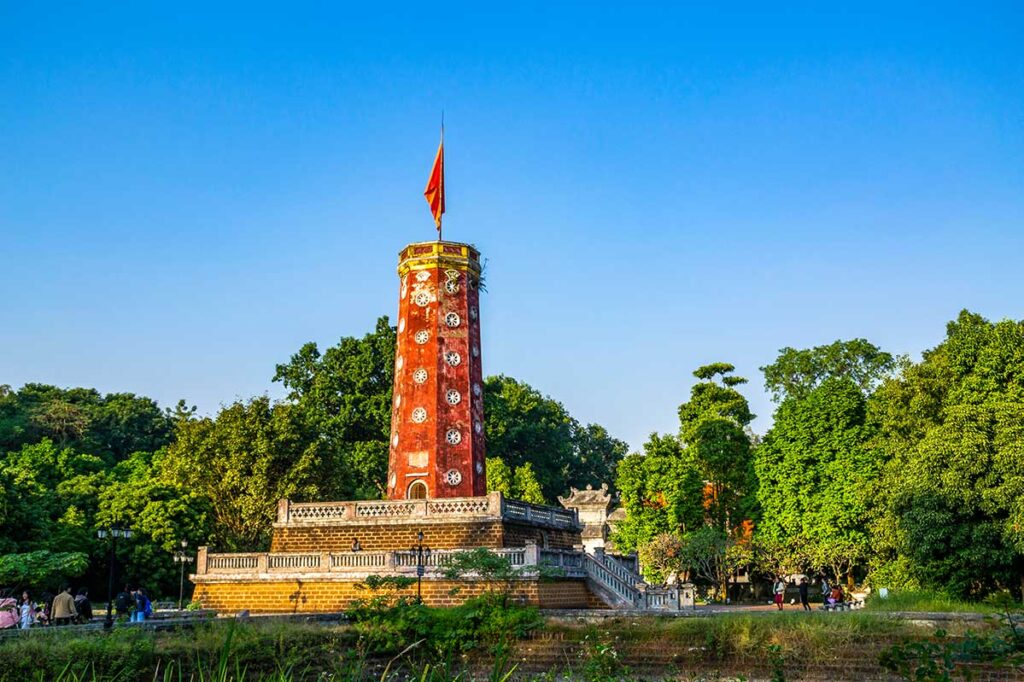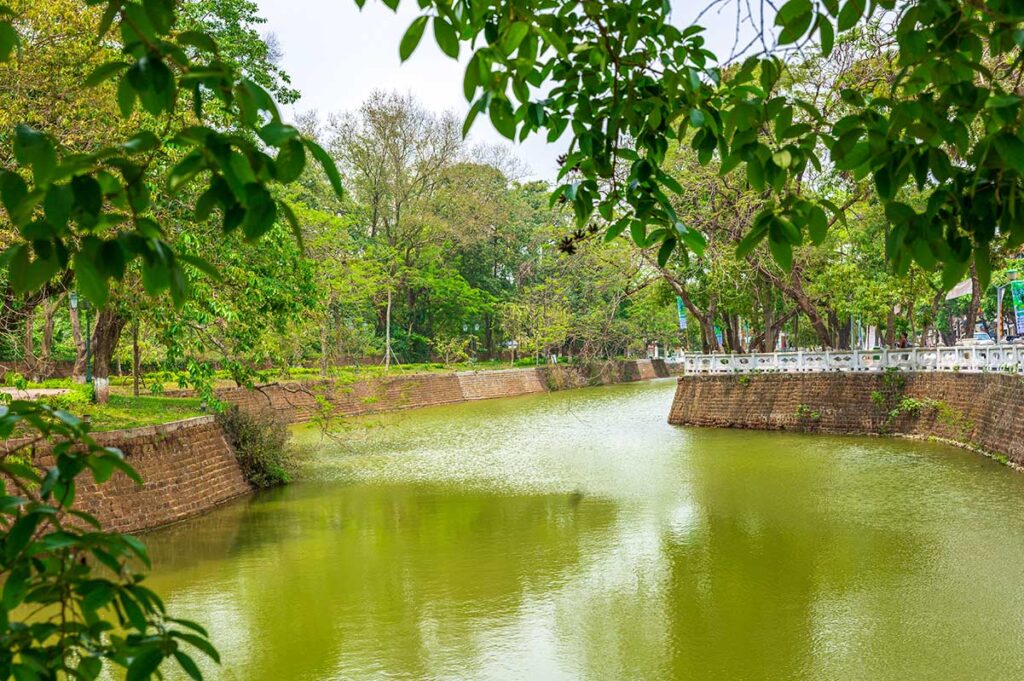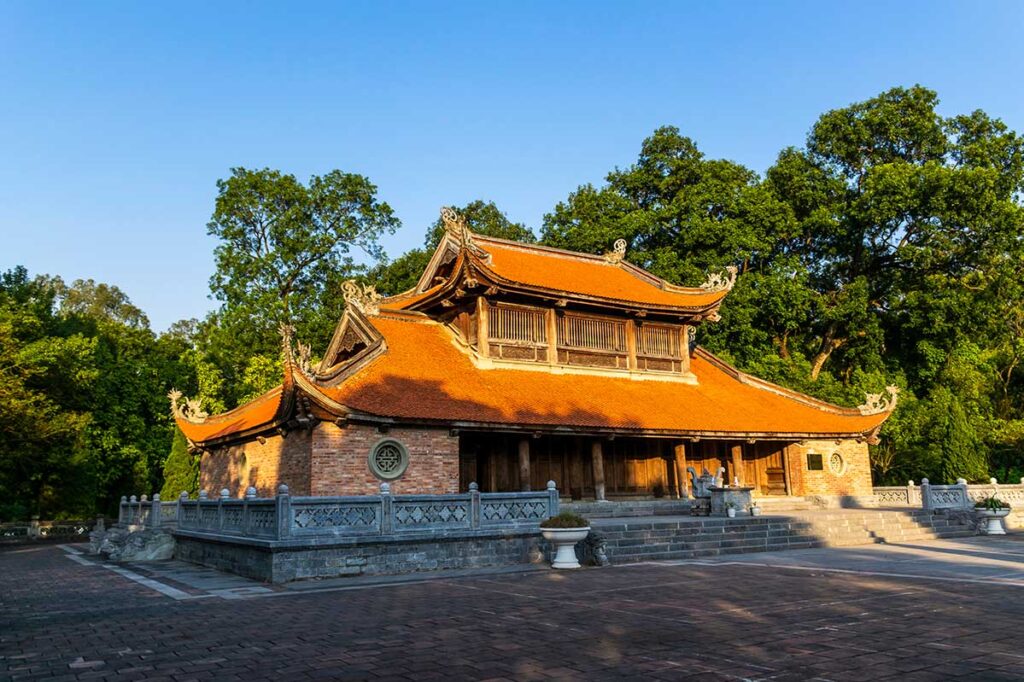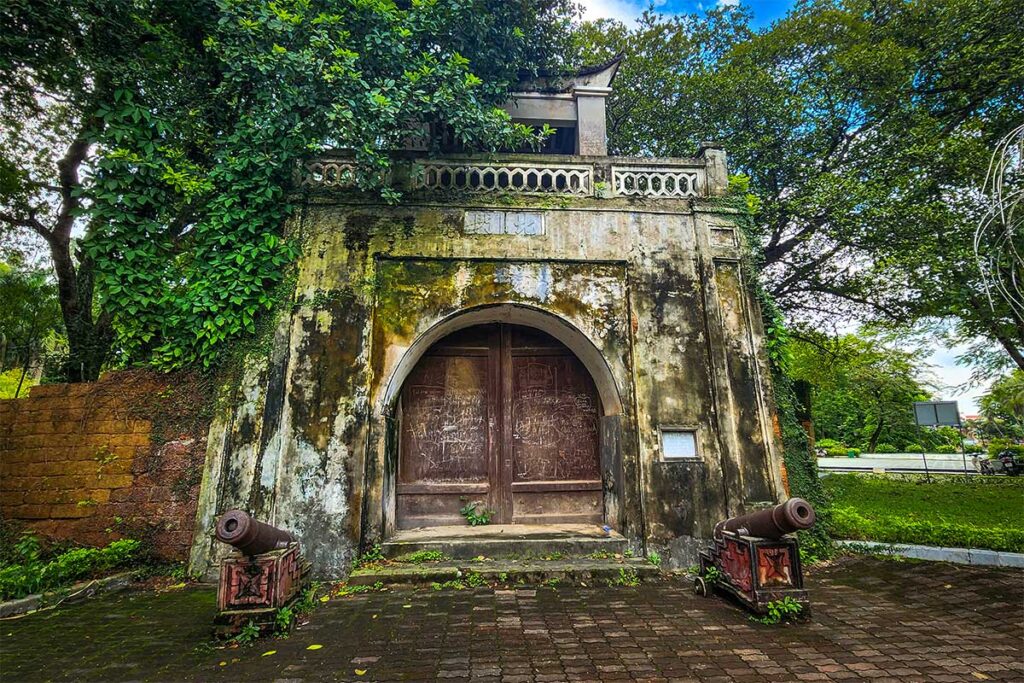Just a short drive from Hanoi’s bustling center lies the Son Tay Old Fortress (also known as the Son Tay Ancient Citadel), a historic gem that whispers tales of Vietnam’s past. This 16-hectare fortress, built entirely of laterite in 1822, is a testament to Vietnam’s rich history and architectural ingenuity. While not as grand as the Imperial Citadel of Thang Long in Hanoi, Son Tay Old Fortress offers a unique glimpse into the country’s military past and cultural heritage.
History of Son Tay Fortress
The Son Tay Ancient Citadel was constructed in 1822 during the reign of Emperor Minh Mang (1791-1841) under the Nguyen Dynasty. Its construction, entirely of laterite, a locally available material ideal for defense, makes it unique among the 20 citadels built during the Nguyen Dynasty. The fortress follows the Vauban architectural style, with each side of its square structure measuring approximately 400 meters in length and 5 meters in height. The citadel features four gates facing the cardinal directions, each guarded by a tower.
Significant events during the resistance against French colonialism in the 1870s and 1880s underscore the citadel’s historical importance. Despite multiple attacks, the fortress remained a symbol of Vietnamese resilience and military strategy. In 1884, the French finally captured the citadel after several attempts. Recognizing its historical and cultural significance, the Governor General of Indochina declared it a relic in 1924, and in 1994, it was recognized as a National Historic Landmark by the Ministry of Culture and Information.
Highlights of Son Tay Ancient Citadel
1. The Flag Tower

A prominent feature of the citadel is the octagonal flag tower, standing 18 meters tall. Originally serving as an observation post, the tower was equipped with a signal transmitter in 1940 to announce the time and transmit emergency warnings.
2. The Gates and Ramparts

The fortress boasts four main gates: the Front (Tien) Gate facing Quang Trung Street, the Back (Hau) Gate facing Le Loi Street and the Red River, the Right (Huu) Gate looking onto Tran Hung Dao Street, and the Left (Ta) Gate with a view of Nghe market. These gates, designed in a quadrilateral shape with a trapezoidal cross-section, were essential for the citadel’s defense.
3. The Moat and Pedestrian Walking Area

Encircling the citadel is a moat, approximately 5 meters wide and 2,000 meters long, connected to the Tinh Giang River. This moat served as a crucial defensive barrier. Today, a pedestrian walking area around the fortress offers a serene path to view the moat and the ancient walls, providing a peaceful contrast to the citadel’s turbulent history.
4. Kinh Thien Palace and Vong Cung Gate

At the heart of the citadel lies Kinh Thien Palace, the ceremonial center where the King conducted rituals and governance. The palace, along with the Vong Cung Gate, represents the most significant architectural and historical features of the site, embodying the spiritual essence of the ancient citadel.
5. The Cannons and Guard Towers

Strategically placed cannons once guarded the citadel’s entrances, and although only two original bridges across the moat remain, they still offer a glimpse into the citadel’s formidable defenses. The guard towers at each gate further illustrate the military precision of the Nguyen Dynasty.
6. The Ancient Wells
Four ancient wells, located at the citadel’s corners, were crucial for providing water. These 6-meter-deep wells, built with laterite steps, are a testament to the ingenious construction techniques of the time.
Visiting information
The Son Tay Ancient Citadel is a cultural landmark that attracts 25,000-30,000 visitors on weekends. Entry is free for all visitors.
Address: Son Tay town, Hanoi, Vietnam
Opening Times: Open daily from 7:00 AM to 5:00 PM
How to get to Son Tay Old Fortress
The Son Tay Old Fortress is located about 40 kilometers west of Hanoi and takes roughly an hour to reach by car or motorbike. Due to its location outside the city center, private transportation is the most convenient option.
Renting a car with driver
The most comfortable and hassle-free way to reach Son Tay Old Fortress is by renting a car with a driver. This option allows you to negotiate a fixed price upfront, ensuring transparency and avoiding any surprises. Your driver can wait for you while you explore the fortress and even take you to other nearby attractions, making it a great choice for a day trip.
Motorbike
If you’re an experienced motorbike rider with a valid license, renting a motorbike can be a thrilling and cost-effective way to get to Son Tay Old Fortress. You can rent a bike in Hanoi and follow Google Maps navigation to the fortress. Remember to prioritize safety and be cautious on the roads.
Sights to combine with Son Tay Old Fortress
Sights in the area of Son Tay Citadel
- Duong Lam Ancient Village: Less than 5 km (10 minutes by car) from Son Tay Old Fortress, Duong Lam Ancient Village is a well-preserved traditional village with centuries-old houses, communal houses, and pagodas. It’s a great place to experience rural Vietnamese life and architecture.
Sights on the way from Hanoi
- Thay Pagoda (Chùa Thầy): Located about 20 km from Hanoi, Thay Pagoda is a beautiful Buddhist temple complex nestled among mountains and caves. It’s known for its unique architecture, serene atmosphere, and annual water puppet festival.
- Mia Pagoda (Chùa Mía): This ancient pagoda, dating back over 900 years, is a significant pilgrimage site for Buddhists. Its impressive architecture and tranquil surroundings make it a worthwhile stop.
- Chàng Sơn Hand Fan Village: This traditional village is famous for its handcrafted fans, made from bamboo and silk. You can witness the intricate process of fan-making and even purchase a unique souvenir.
- Phú Vinh Bamboo & Rattan Village: Another craft village worth exploring, Phú Vinh specializes in bamboo and rattan products. You’ll find skilled artisans creating baskets, furniture, and decorative items.
Is it worth visiting Son Tay Old Fortress?
While Son Tay Ancient Citadel may not be as grand as the Imperial Citadel of Thang Long in Hanoi, it offers a fascinating glimpse into Vietnam’s military history and architectural ingenuity. The journey from Hanoi is relatively long, so it is best to combine the visit with other nearby attractions for a fulfilling day trip. But if you’re a history buff or simply looking to explore a less-touristy side of Hanoi, Son Tay Old Fortress is definitely worth a visit.





